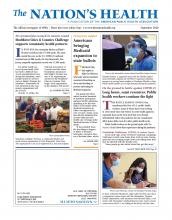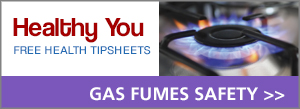
This fall, many school districts in the U.S. are holding all of their classes remotely, which may leave students without access to broadband at an educational disadvantage.
Photo by Ijeab, courtesy iStockphoto
Access to high-speed internet is an indispensable part of modern life, especially as people shelter during the coronavirus.
As COVID-19 has kept Americans apart, broadband technologies have enabled some of them to work from home, pay bills, take learning courses, seek job opportunities and shop for groceries and other essentials. People are also making virtual health care visits through teleconference platforms.
But for those who cannot afford or otherwise lack internet access, the online shift is passing them by. Broadband access is a public health issue, and one that is being recognized more often as a social determinant of health.
Over 18 million people in the U.S. live in regions without broadband access, according to the 2020 annual report released April 24 by the Federal Communications Commission. But polls and other studies place the number far higher.
Broadband Now researchers, who analyzed FCC data on broadband coverage, say the number is closer to 42 million people without connection. FCC uses self-reporting from internet service providers to tally numbers. If there is service to at least one household in an area, the agency counts the entire census block as covered, according to Broadband Now.
Racial and ethnic minorities, older adults and people with limited education and income are less likely to have broadband access than other households, a 2018 Pew Research poll found. Tribal communities are particularly affected.
The COVID-19 pandemic has exacerbated challenges in households without broadband access, including remote learning. Recent federal data show that 14% of school-age children live in households with no internet access.
This fall, many school districts will not hold in-person classes because of COVID-19, meaning millions of students without high-speed internet at home will have difficulty keeping up with remote learning. Some students have been relegated to traveling miles to Wi-Fi parking lots, where they pick up an internet signal — such as from a library, coffee shop or hotspot — to take remote classes and do homework.
One way to increase broadband access is through the federal Lifeline program, which provides discounts on broadband and phone services to low-income people. But as of April, only 7 million eligible people had enrolled in the program, according to the Network for Public Health Law, which issued a new fact sheet on the issue in June. To be eligible for Lifeline, households must have incomes that are less than 135% of poverty guidelines or participate in federal assistance programs, such as Medicaid or the Supplemental Nutrition Assistance Program.
“Closing this digital divide is essential to promoting public health, particularly during the COVID-19 pandemic,” according to the Network for Public Health Law.
The FCC must also do better in bringing broadband to more U.S. regions, said FCC Commissioner Jessica Rosenworcel, JD, who dissented from the agency’s 2020 broadband report because she questioned FCC’s data collection and failure to address broadband affordability.
“This pandemic has exposed just how many are stuck on the wrong side of the digital divide without adequate internet access,” Rosenworcel told The Nation’s Health. “Families in every state — big city and small town — struggle with getting online every day. That’s a problem for all of us because it lessens our collective ability to respond to the crisis at hand and move forward together.”
Broadband access should be approached in the manner similar to how America brought electricity to rural areas before World War II, Rosenworcel said. Supported by an act of Congress, officials fanned out across America to map the unconnected communities.
“It sounds crazy, but the FCC does not have reliable maps of where broadband is and is not across the country,” Rosenworcel said. “Once we have better maps, we can target our solutions to the right places, just as was done with electrification.
“I am optimistic that we can get there, because we can solve problems and do audacious things with the right policies in place.”
To access the FCC report, visit bit.ly/FCCbroadbandreport. For information on Lifeline, visit www.usac.org/lifeline.
- Copyright The Nation’s Health, American Public Health Association









